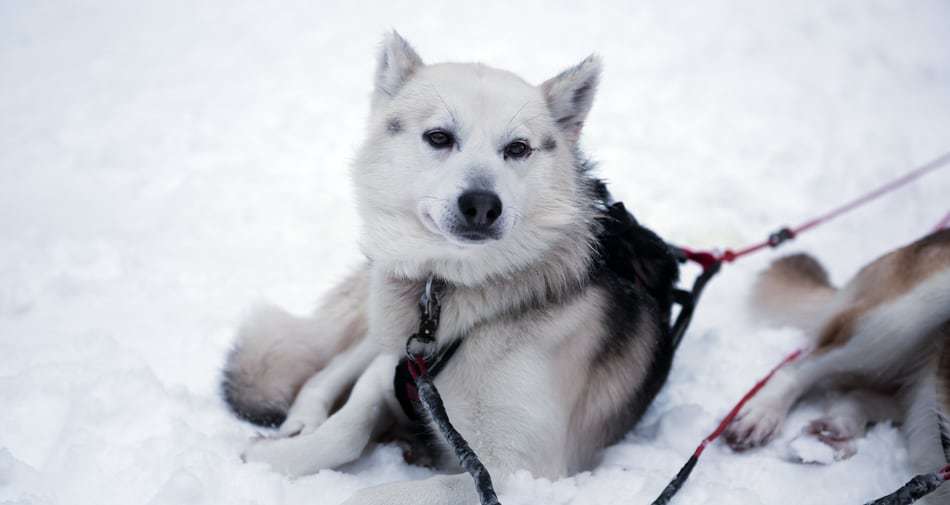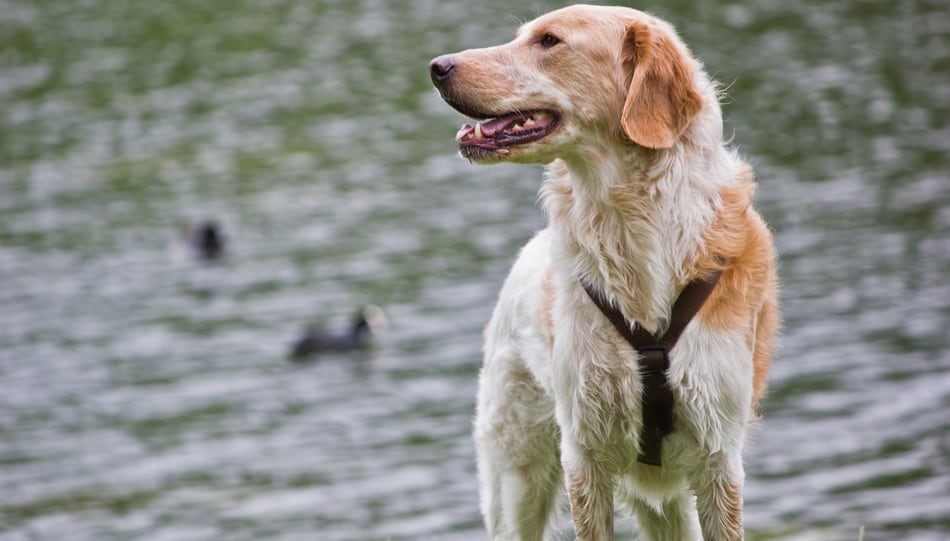
As a dog lover myself, there’s nothing that makes me happier than being able to bring my dog everywhere that I go. I wasn’t quite sure how to include him on rappelling trips, however, so I did some research and wrote the following guide to help you bring your dog on your next abseiling adventure.
Although it requires some caution and equipment, rappelling with your dog is perfectly safe and can be achieved by attaching the dog to your harness through a tandem rappel system. You should take extra steps to ensure that your pooch is not only comfortable, but enjoying his time on the rope.
In order to rappel with your dog, there are a few steps that you will need to follow. First, get the proper equipment to safely lower your dog down the rope. For this, you need a specially-designed dog harness; holding your dog, using its backpack, or rappelling while wearing some type of carrier are dangerous and should not be attempted. Next, you need to take steps to ensure that your dog is comfortable with the rappel. Finally, read the guide below to ensure you know the proper procedure when performing the rappel.
Equipment
There are specific harnesses that are designed to help your dog rappel, such as this one sold at Ruffwear. These harnesses are very similar to the climbing harness you will be wearing: they’re made out of webbing, they have several redundancy points, and they’re designed with rappelling in mind.
The harnesses are designed to wrap around the chest of your dog, securing it in place through the use of straps that go under its chest and around its back leg. There’s a reinforced handle on top that you use to connect your dogs’ harness to yours. Of course, the harnesses come in different sizes, and the straps are adjustable for extra customizability.
These harnesses are essential for the following reasons:
- Comfort of fit: The harness is designed to support your dog evenly in terms of weight distribution. This will ensure your dog is more comfortable and will reduce the chance of it squirming.
- Safety: Because they’re made specifically for suspending dogs in the air, the harnesses ensure that there’s no way your dog and squirm his way out.
- Compatibility: A proper dog harness is the only device that will allow you to properly attach your dogs’ harness to yours so that you can commence the rappel.
The harness costs about $20. I know that, especially with smaller dogs, there can be a temptation to save this money and simply use a jerry rigged system. However, I want to urge you not to do this. Using a properly designed harness is the only way to ensure that both you and your dog get down safely.
Training Your Dog
Once you have the proper equipment, it’s time to start getting your pup ready for the rappel. Now, if your dog is like mine, he much prefers to keep all four paws planted firmly on the group, and convincing him to be picked up and dangled over cliff faces took a little bit of work. By following the right steps, however, you too can ensure that your furry friend comes to love rappelling.

The most important thing to start off with is trust. For your dog to learn, it must trust that you’re not going to let anything happen to it. Therefor, the person teaching the dog to rappel should have some degree of familiarity with it; preferably the owner, but any individual that the dog knows and trusts will do.
Once trust is established, it’s time to get your dog familiar with the harness. This is another important step; the more comfortable your dog is in the harness, the less likely it is to squirm while being lowered. To get your dog comfortable, make it wear the harness even when you’re not rappelling. Put it on your dog while taking it for a walk, or even just when hanging around the house. This will get it used to the feel of the webbing.
Just like learning to rappel by yourself, it’s important to practice rappelling with a dog in a controlled environment. I would suggest heading to a local climbing crag, somewhere that you’re familiar with and where you know of short, easy-to access rappels.
The best way to get your dog familiar with rappelling is actually to set it up on top rope belay first so that it gets used to the feel of hanging in the air. Put your dogs harness on, tie it in, and then use your rope to pull it a few feet off the ground. Once there, secure your belay and focus on making your dog comfortable while it hangs. Speak to it in a comforting voice, pet it, and give it some of its favourite toys so that it learns to associate rappelling with pleasant actions. Make sure to let your dog down if it’s clearly uncomfortable.
Repeat this several times, gradually lifting your dog up to greater and greater heights, until it becomes familiar with the process.
Safety note: While doing this, it’s absolutely crucial to watch your dog’s body language for signs of discomfort. Dogs like to chew when they get anxious; if your dog starts biting at its harness, or the rappel rope, it could seriously compromise the safety of your belay. There are a few signs to look for to see if your dog is feeling anxious:
- Yawning: While humans see yawns as a sign of boredom, dogs often use it as a way to convey anxiety.
- Licking and/or chewing: If your dog is licking its nose and mouth area, or chewing at its own pause, this is a clear sign that it is uncomfortable.
- Tail between the legs: This signals fear and discomfort.
If your dog shows any of the above behaviours, do your best to comfort it and ensure it that everything is going to be alright. If your dog is sitting calmly with a neutral tail and ears, or it its ears and tail are perked, it’s a good sign that it is comfortable with the situation.
Performing the Rappel
Now that you hav the right harness and your dog is comfortable with heights, it’s time to actually execute the rappel. Remember, the only safe way to do this is to perform a tandem-style rappel, where your dog is attached to your harness and dangles beneath you while you rappel. For those of you who prefer visualization, this is an excellent video that demonstrates what I mean.
Once you have your dog strapped in, use the following steps to ensure a safe rappel:
- First, check that all of your own gear is in place, your device is attached to the rope, and that your dog’s harness is on securely.
- Next, attached your dogs harness to yours using the tie-in loops, a length of rope, and some webbing.
- Keeping your brake hand on the rope, use your other hand to control your dog as you walk slowly backwards towards the rappel.
- Once both you and your dog are over the ‘lip’ of the rappel and truly hanging, brace your feet against the wall and low your dog down until it is hanging by the rope. This frees up your non-brake hand.
- Perform the rappel as normal, taking extra care to check on your dogs condition throughout the rappel.
- Once you’re both safely on the ground, untie your dog from your harness and, if necessary, disassemble the rappel.
It’s important to note a couple of safety things. First of all, your dog is dangling several feet below you, attached only by a piece of rope. Because of this, they are liable to swing back and forth, potentially making contact with the wall. This also means that it will be more difficult to navigate an d ledges you may encounter on the way down.
Secondly, while you are (hopefully) wearing a helmet, your dog may not be. Take extra care to avoid rockfall and other hazards to keep your pooch safe.
So there you have it! By getting the right equipment, patiently training your dog, and using the above guide, you can bring your dog with you in just about any rappelling situation!
Related Questions
Can you just lower the dog on belay?
Depending on the length you need to lower, this may be a possibility; however, there are a couple of things to consider. First, if you’re alone, your dog will have to wait at the bottom of the route until you make your way down. Second, you will have less control over your dog, and it might become more anxious as it will be separated from you.
